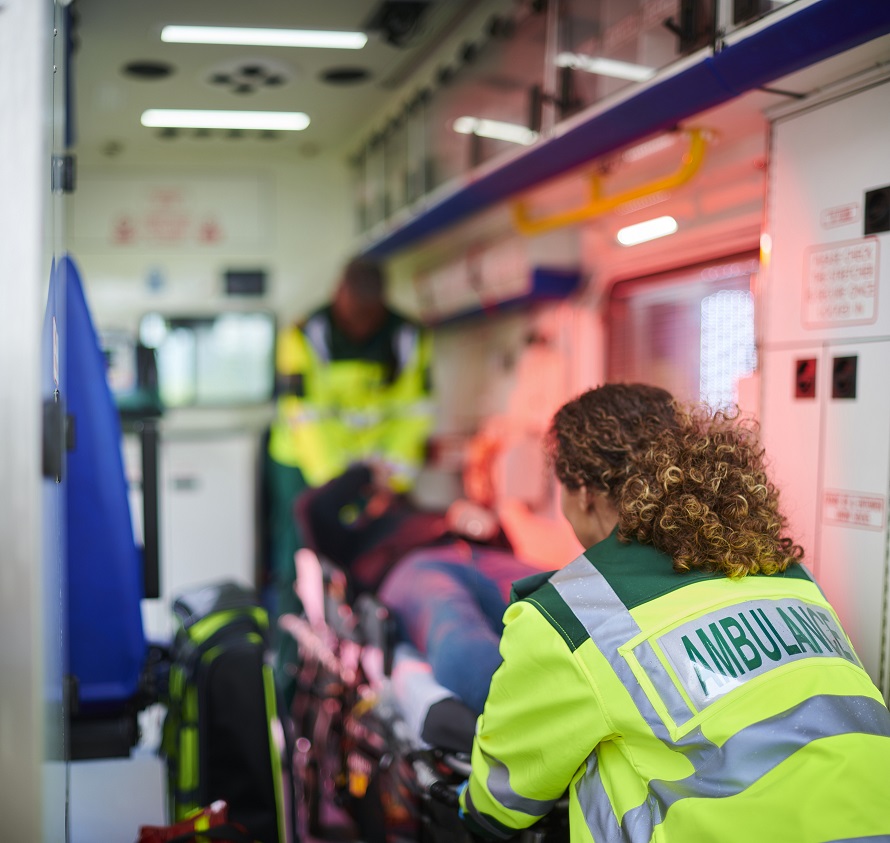Why First Response to a Stroke Is So Critical: Advice From an Emergency Response Professional
December 18, 2024When it comes to stroke, every second counts. When blood flow to the brain is disrupted, either by a clot or a ruptured blood vessel, it deprives brain cells of oxygen and nutrients. Without immediate medical intervention, these cells begin to die, potentially leading to irreversible brain damage, disability, or even death.
Early recognition and swift action can make the difference between life and a lifetime of challenges. Understanding the signs of a stroke and the importance of a fast response isn’t just valuable knowledge. It’s lifesaving. Here, Richard Cain, paramedic with Riverside Healthcare, offers helpful information surrounding stroke—including why a timely response is so critical for ensuring the best possible outcomes.
Recognizing Stroke Symptoms
A helpful way to recognize stroke symptoms is to remember the acronym F-A-S-T. Cain advises anyone who is with a person who may be suffering from a stroke to perform the following actions.
F: Face
Ask the person to smile and check for drooping or asymmetry.
A: Arms
Have them raise both arms. If one arm drifts downward or can't be lifted, it's a warning sign.
S: Speech
Ask them to repeat a simple sentence. Slurred or difficult-to-understand speech could indicate a stroke.
T: Time
If you notice any of these symptoms, act fast and call emergency services immediately.
What Happens When the 911 Call Initiates?
Family members and bystanders are crucial during a stroke emergency. They serve as a bridge between the patient and responders, providing vital information about the patient's baseline when the patient cannot communicate. Equally important, they should help the patient remain calm, as staying composed allows for more effective assistance and communication.
Once a 911 call is made, it’s treated as an emergency from the start. The emergency medical dispatcher gathers critical information, relaying it to responders so they have a clear understanding of the situation upon arrival to the emergency department.
As mentioned, time is critical during a stroke. Responders move quickly, performing assessments like the Cincinnati Stroke Scale to identify deficits, asking the family about the patient's last known normal state, and obtaining a thorough medical history. Initial care begins at the scene, often right at the bedside, before the patient is transported to definitive care, such as a specialized emergency room department. Safety and urgency guide every step of the response.
“Strokes don't always present like you see on television or in the movies, so we have to have an array of tools to try to assess and figure out exactly what's going on with the patient. Obviously, we're going to take baseline vital signs, blood pressure, respirations, pulse. Tidal capnography is something new that we've implemented within the last few years. And, what's coming now is we're starting to institute telemedicine right in the ambulance. With today’s electronic health records, we have tablets that allow us access to the patient's health history.”
The Best Advice: Time Is of the Essence
When the patient arrives at the ER, they are fast-tracked to undergo a CT scan in order to understand exactly what’s going on and identify what kind of stroke a person is experiencing, whether it’s ischemic or hemorrhagic. Getting such an answer in a timely manner is essential for identifying next steps.
Ultimately, though, it’s the time-sensitive nature of identifying a possible stroke, dialing 911, and the following actions that can make the difference between a positive or negative outcome. Again, Cain reinforces the fact that no case should be discounted in terms of severity.
“People are apprehensive about calling 911. They think they're being a burden, but they’re really not. That's literally what we're being paid for,” he assures. “We would rather put your mind at ease if it's nothing and just bring you over to the hospital to get checked out. When it's a true emergency like a stroke, we get gratification from that early recognition, getting the patient the definitive care safely, starting treatments, and generating a positive outcome.”
If you are experiencing a life-threatening emergency, call 911. Click here for more information on the emergency department at Riverside.
